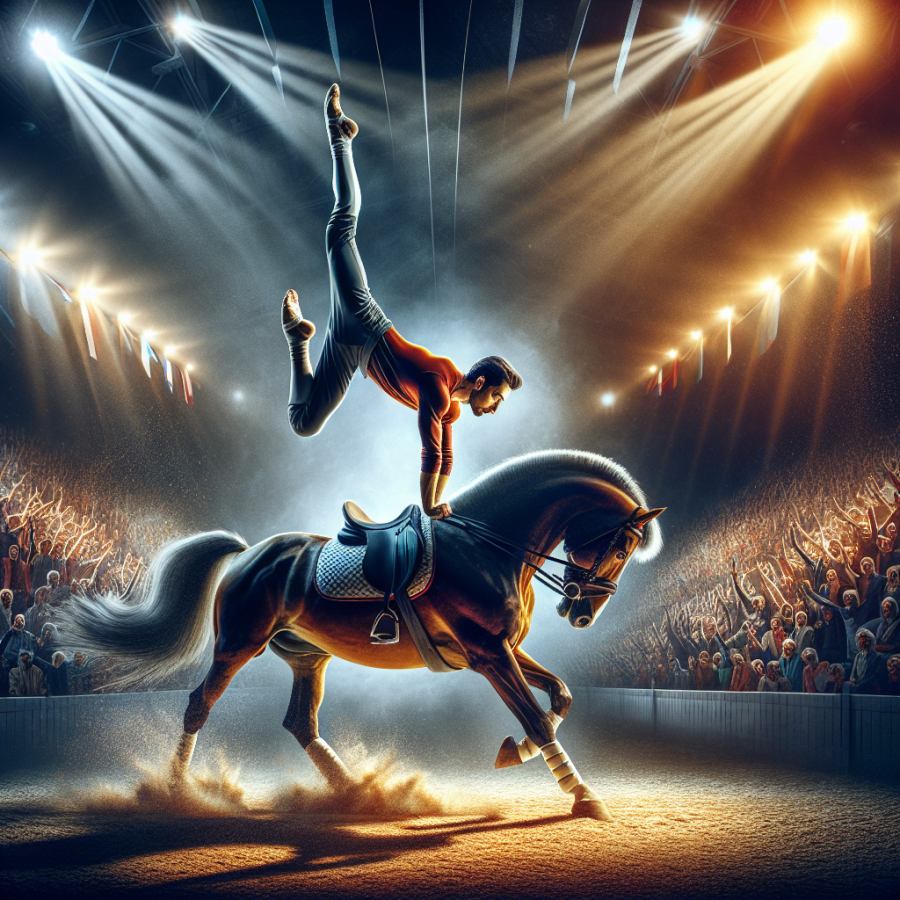Understanding the Fundamentals and History of Equestrian Vaulting
Equestrian vaulting, a unique and artistic discipline, combines elements of gymnastics and dance atop a moving horse. A sport that showcases grace, strength, and harmony between the vaulter and the horse, it has evolved over the centuries into a competitive event admired worldwide.
The origins of equestrian vaulting can be traced back to ancient cultures. It was a skill used first for practical purposes, such as mounting a horse in the absence of a stirrup, and as a means of training for cavalry units, improving soldiers' abilities to mount their horse quickly in armor. The Romans, renowned for their cavalry, practiced vaulting maneuvers as part of their military exercises; this was known as "art of the desultores."
The modern history of vaulting began in post-war Germany, where it was introduced as a method for teaching principles of horsemanship to children. It quickly evolved from a training tool into a competitive sport, with the first competitions held in the 1950s. From there, the sport spread across Europe and eventually reached the United States, where it was formalized under the American Vaulting Association in the late 1960s.
Within the sport, vaulters are required to perform compulsory exercises and freestyle routines set to music. The compulsory exercises are designed to demonstrate the athlete's strength, balance, and flexibility, and include movements such as the mount, basic seat, flag, mill, scissors, stand, and flank. Each movement requires precise timing and coordination with the horse's gait.
Freestyle routines, on the other hand, allow vaulters to express their creativity and gymnastic talent. These routines generally last between one to four minutes and are judged on artistic impression, technical difficulty, and the harmony between the vaulter and the horse.
The horses used in vaulting are specially trained to maintain a steady gait, usually a canter, and to remain under the command of a longeur, who guides the horse in a circle on a longe line. The bond between horse and vaulter is of utmost importance; a trusting relationship ensures the vaulter's safety and the horse's willingness to participate.
In terms of equipment, a vaulting surcingle with special handles and a strap that runs around the horse's belly are used to assist the vaulter in performing the exercises.
Read also:
Maximizing Your Chances: The Number of D1 Football Scholarships
The Art and Athleticism of Equestrian Vaulting
Equestrian vaulting is a unique and captivating sport that combines the artistry of gymnastics and dance with the powerful movement of a horse. At its core, vaulting is a performance that showcases the delicate balance between human and equine athletes, demanding a high level of strength, flexibility, rhythm, and trust from both.
The historical roots of equestrian vaulting can be traced back to ancient Rome, where vaulters displayed their acrobatic skills atop cantering horses. Modern vaulting, however, has evolved into a far more refined and competitive sport, with athletes performing both compulsory exercises and freestyle routines choreographed to music.
Vaulting horses are not just any horses; they are carefully trained to canter in a consistent circle on a long line, known as a lunge line, guided by a lunger. The horse's ability to maintain a steady gait, rhythm, and circle size is crucial for the vaulter to execute the movements effectively. A vaulter's connection with their equine partner is of paramount importance. This partnership must be built on trust, as the vaulter must feel confident that their horse will remain calm and steady throughout the routine.
The sport requires vaulters to have gymnastic prowess as they leap onto the moving horse and perform a variety of movements, including shoulder stands, mill exercises, and various dismounts. The athletic component is evident as vaulters execute lifts, balances, and twists, all while maintaining harmony with their horse's movement. Flexibility and control are essential, as is the strength to propel oneself into the air and the grace to land softly on the horse's back.
A vaulter's attire is universally a leotard, providing the freedom of movement necessary for their intricate routines. The horse, too, is equipped with specific gear, including a surcingle—a type of harness with handles—and a thick, cushioned pad to both provide comfort to the horse and secure footing for the vaulter.
Each competition typically consists of team, individual, and pas-de-deux events. In team events, multiple vaulters perform on the horse simultaneously, creating visually stunning formations and demonstrating impressive coordination. Individual events allow vaulters to showcase their personal artistry and skill, while pas-de-deux, or pairs vaulting, blends the beauty of two athletes working in perfect sync.
Scoring in vaulting competitions is based on execution, form, difficulty, balance, and harmony with the horse.




